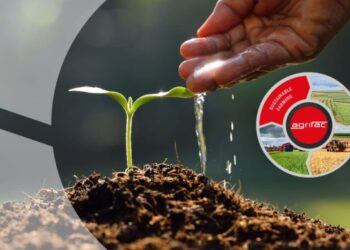Parts of the Amazon rainforest are releasing more carbon than it is absorbing, scientists have confirmed in a study published in the journal Nature.
According to a study, the released carbon is amounting up to a billion tonnes of carbon dioxide a year. Amazon was earlier known to be a “carbon sink” and used to absorb the emissions of carbon-threatening climate change.
Most of the emissions are a result of fires, many started deliberately to clear land for the purpose of beef and soy production. But even with no fires, the forest has become a source of emission of carbon rather than a sink to absorb it, writes The Guardian.
:focal(1809x2119:1810x2120)/https://public-media.si-cdn.com/filer/b1/01/b101732e-7ed6-44c9-aa87-34ad8d75c78a/gettyimages-129374610.jpg)
To measure the atmosphere and reach this conclusion, eminent scientist Professor Luciana Gatti and her colleagues from Brazil’s National Institute for Space Research (INPE) have gathered samples from the Amazon twice a month over a period of 9 years and analyzed them. The team analyzed how carbon dioxide and carbon monoxide are spread over different areas in the forest, wrote the Independent.
The scientists then compared the air samples with the ones from the South Atlantic Ocean which is known to absorb 75% of the excess heat and 40 percent of the human-generated carbon dioxide CO2 absorbed by the ocean.
Prof Gatti said: “Each year is worse. We observed that this area in the south-east is an important source of carbon. And it doesn’t matter whether it is a wet year or a dry year. 2017-18 was a wet year, but it didn’t make any difference.”
“This is very bad news for everybody but mainly for Brazil. We have lots of problems with lack of precipitation, such as electricity from hydropower becoming more expensive.
There are also heavy losses in agriculture. We need to link this with Amazon deforestation and change the behavior,” added Dr. Gatti.
Prof Carlos Nobre the co-author of Prof Gatti’s study is a researcher at the University of Sao Paulo’s Institute for Advanced Studies and he has called this study result very “worrying” as “it could be showing the beginnings of a major tipping point”.
Moreover, he asserts that in the coming thirty years’ time if this phenomenon doesn’t change for good, the Amazon could change into a Savanna and begin to emit more carbon than it takes in.

Other scientists who have been working in a similar area assert that these findings are congruous with other studies that they have published reported BBC.
Nancy Harris, from the World Resources Institute (WRI) who has coauthored a similar study, stated that debating if the amazon has become the source of emission of carbon dioxide or is in the brim of becoming a source doesn’t matter. We need to understand the severity of the situation.

She added,
“The science is now clear that the Amazon is in trouble. High emissions from deforestation have plagued the region for decades, and climate change impacts on forests like drought, fire, and heat-induced die-offs will become more and more common over the coming decade.”
















